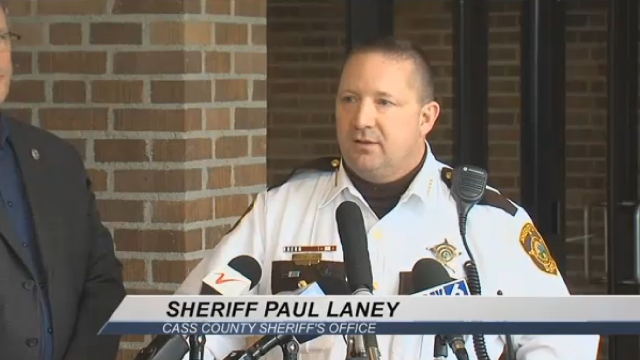More Numbers: Sheriff Paul Laney Still Wrong About Violence Against Cops

Not that I want to belabor the point, but in response to my post from yesterday about Cass County Sheriff Paul Laney’s comments on violence against cops (he was on television this week responding to my criticism of him from last week) a reader made a good point on Facebook.
He noted that I was using officer deaths to suggest that Laney was wrong to suggest that violence against law enforcement officers is increasing, and that might not be a good metric on its own because officers a) have better equipment and b) we have better medicine to keep wounded cops alive.
This is perfectly valid criticism, so I took him up on his request for a look at the numbers. And the numbers still show that Sheriff Laney and others who claim that violence against cops is escalating are wrong.
First, here’s the trend line for officer deaths which I used in my previous post.
As you can see, officer deaths are way down from the 1970’s. But let’s take a look at assaults on officers.
I used data from the Uniform Crime Reporting Program, which is the basis for a report the FBI puts out every year about violence against cops. The number of law enforcement agencies reporting data to the UCR tends to vary from year to year, so this isn’t a consistent sample, but it’s the majority of them. In 2014, the last year for which data is available, law enforcement agencies covering 76.4 percent of the nation’s population reported data.
So it’s an imperfect but still very large, very good sample. Certainly the best available.
Also, the numbers cast a wide net when it comes to types of law enforcement. Per the methodology, the data covers “assaults on duly sworn city, university and college, county, state, and tribal law enforcement officers.”
The definition of an assault is anything “resulting in injuries to their officers or instances in which an offender used a weapon that could have caused injury or death.” Also included are assaults involving “more than verbal abuse or minor resistance to an arrest.”
And what it shows is that from 1987 (the earliest year of data available online) both the number of assaults on officers and the rate of assaults per 100 officers has declined steadily:
Here’s the trend for the number of assaults:
Here’s the trend for the rate of assaults per 100 sworn officers:
Some are accusing me of making a mountain out of a molehill on this issue, but I think it’s extremely important. Mostly because whenever I point out to people that violence against cops – whether we measure if by officer fatalities or by the number of assaults on cops – has been declining they react with surprise and usually disbelief.
The public believes, based on sensational news media and political rhetoric, that we live in a more violent society. “Despite government data showing declining violent crime rates in the U.S. over the past two decades, majorities of Americans in Gallup’s trend still maintained that crime had increased nationally,” Gallup reported late last year.
The same misconception holds true about violence against cops. People form their opinions based on anecdotal cases widely reported in the media instead of the data which shows something quite different.
Any way you want to measure it, our society is much less violent today than in generations past. We should be happy about that, but unfortunately it doesn’t fit the political narrative for some.
Like, say, elected sheriffs looking to defend the increased militarization of law enforcement.








